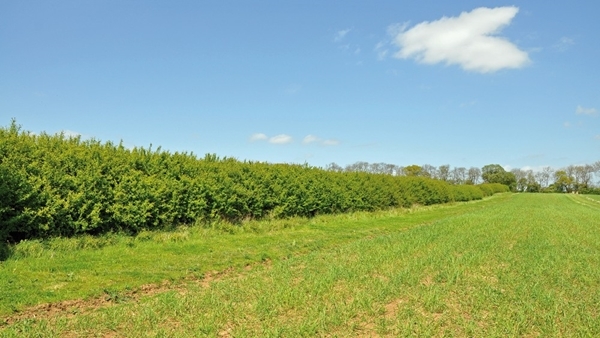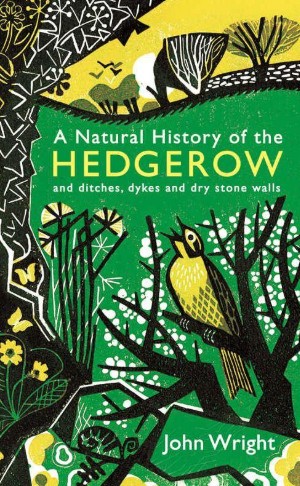
Alastair Leake, GWCT Head of Policy, explains more about a project to establish a Hedgerow Carbon Code that benefits carbon storage and biodiversity.
With British agriculture committed to reaching carbon neutrality by 2040, farmers are beginning to work out how carbon accounts can be calculated for their farms. An array of different auditing systems can be used to calculate a farm’s greenhouse gas emissions - farmers just have to plug in the data, including fuel and energy usage, fertilisers, feed and sprays, and the system will calculate the emissions. While food production does require fossil fuel usage, this can be minimised. In the arable sector, for example, the Game & Wildlife Conservation Trust’s (GWCT) research at the Allerton Project indicates that fuel use in crop establishment can be cut by 70% through switching to non-plough tillage.
Farmers have another advantage – agriculture is one of few industries to use atmospheric carbon dioxide (CO2) as an essential raw material input, locking up the carbon in plants. In crop plants, this carbon sequestration is largely temporary, as the carbon is released on consumption of the crop or the breakdown of residues in the soil. However, plants growing outside the cropped area could lock up carbon more permanently – areas of woodland, buffer strips, beetle banks and hedgerows all remove CO2 from the atmosphere and store it in plants and soil.
The Woodland Carbon Code was launched over a decade ago, enabling farmers and landowners to calculate the projected carbon storage of a newly-planted wood over 100 years. Being able to assign a carbon value to different habitats will enable us to better calculate the carbon credits the farm is securing outside the land used for food production, potentially off-setting the emissions from farming.
Hedgerows: the storage potential
It is estimated that there are 402,000km of hedgerows in Britain that are in good condition - that have flowers and fruits, without any gaps and tussocky perennial grasses between it and the field hedge. A further 145,000km are in poor condition, where their roots have been ploughed, where sprays and fertilisers have encroached or where they have been over-zealously flailed. A further 26,000km can no longer be classified as hedges due to severe deterioration in their structure. Many of these hedges are found on former mixed farms that have reverted to all-arable production, with the hedges being a relic of the previous farming system and now redundant from their role in containing livestock.
However, they are still protected by the 1997 Hedgerow Regulations, which require landowners to seek consent to remove hedges. It is estimated that British hedgerows are currently storing around nine million tonnes of carbon, valued at £63m at base carbon prices. There is enormous potential for this figure to be increased by filling up holes, restoring relic hedgerows and allowing hedgerows to grow outwards and upwards – but we need a way to calculate how much additional carbon can be stored by doing this.
The Hedgerow Carbon Code
To create the Hedgerow Carbon Code, the Allerton Project looked at the Natural Environment Investment Readiness Fund - a grant scheme that aimed to stimulate private investment by helping environmental projects prepare for commercialisation.
The grant enabled the Allerton Project to bring together a small team of experts, led by Dr Matthew Axe, to work on a Hedgerow Carbon Calculator. Using data gathered by ‘harvesting’ sections of hedgerows, Data Analyst Cameron Hubbard, part of the Biometrics Team at GWCT, was able to create a matrix for calculating the carbon in a hedge by entering its dimensions - length, width and height. For hedges that are variable in structure, the calculator will allow the operator to vary the dimension data being entered in 10m sections – although in reality most hedges tend to be relatively uniform and do not require this level of resolution.
The calculator is currently being piloted at the Allerton Project farm at Loddington in Leicestershire. The Allerton farm is particularly testing because the hedges have been managed for the past 30 years to benefit biodiversity, so there is a wide range of hedge structures and ages to measure and calculate. It is estimated that, nationally, 60% of hedges are made up of two principal species - hawthorn and blackthorn.
Further work is needed to assess the carbon storage of other, less frequently occurring species, and to record hedgerow trees’ contribution to carbon storage. To verify the results of the calculator, drone company Treeconomy is scanning the hedge density using Light Detection and Ranging (LiDAR). Once the initial pilot is complete, trials will be conducted on Kellogg’s ‘Origins’ wheat supply chain farms in Northamptonshire. Kellogg’s is a partner in the project, which we hope might ultimately lead to carbon ‘in-set’ trading, where the wheat for breakfast cereals and the carbon credits for toasting them can be potentially traded together as a package.
DID YOU KNOW? - British hedgerows store around nine million tonnes of carbon, valued at £63m at base carbon prices
Further work is also required to assess the below-ground hedgerow carbon store. Initial ‘digs’ indicate that around 40% of hedgerow carbon is stored in hedges’ root structures, and the calculator is now able to amalgamate this with the above-ground biomass. Further work led by Professor Pippa Chapman at the University of Leeds also shows that the soil underneath hedgerows can store considerable quantities of carbon.
Professor Chapman is examining how this store of carbon varies with soil type, hedge age and the previous management regime. Where hedges are cut frequently, it is estimated that around 90% of the small twigs cut off by the flail fall inside the hedge structure, ultimately landing on the soil surface. In time, these become embedded within the soil, building up a substantial pool of carbon. With further research, it may be possible to estimate the size of this pool and create a hedgerow soil carbon calculator.
Commenting on the Hedgerow Carbon Calculator, Project Manager Alastair Leake says: “We became concerned that the carbon agenda might eclipse the biodiversity one as farmers and landowners sought to monetise opportunities to trade carbon. What our work is showing is that there is a potential win–win with hedgerows, where both carbon storage and biodiversity can benefit simultaneously. Bigger hedges contain more carbon, but also more flowers and berries – good news for farmers and for wildlife.”
This article first appeared in Land & Business magazine, the Country Land & Business Association’s monthly member publication.

GWCT Bestseller: A Natural History of the Hedgerow
Informative, practical, entertaining and richly illustrated in colour throughout, A Natural History of the Hedgerow is a book to stuff into your pocket for country walks in every season, or to savour in winter before a roaring fire
View Book >
or
Buy Now - £12.00 >
100% Secure. All Credit & Debit cards, PayPal, Apple Pay and Google Pay accepted.
